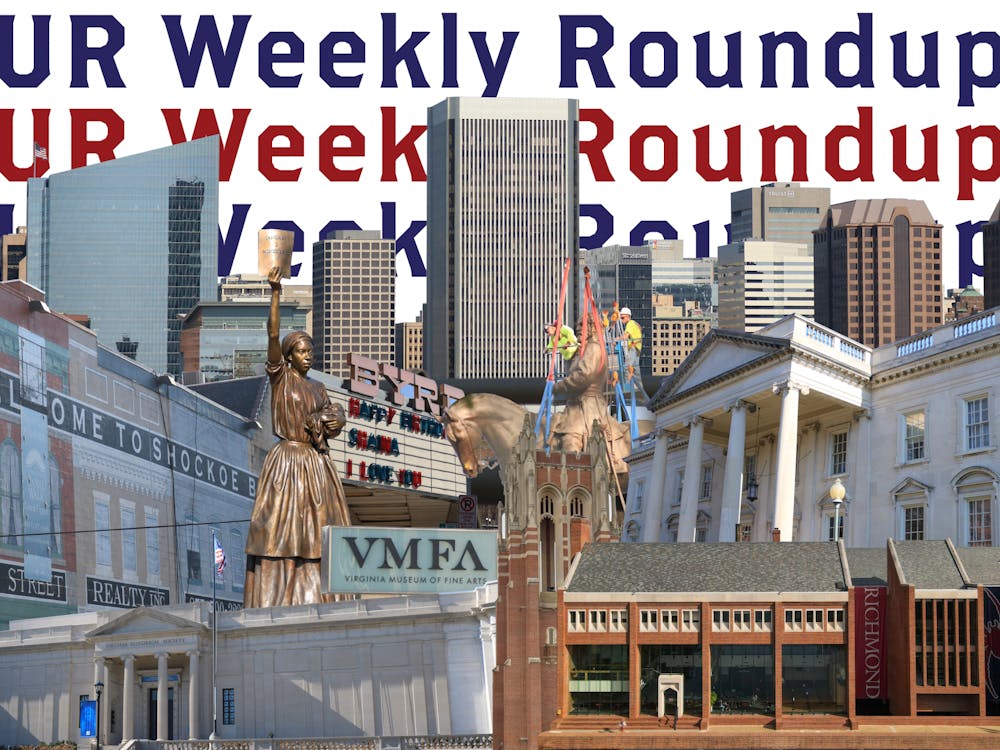The debate over the threat that developing Shockhoe Bottom would pose to the preservation of the area’s history has been recently reignited by Academy Award-winning actress Lupita Nyong’o.
Richmond Mayor Dwight Jones’ proposal to develop the Shockoe region with a new minor league baseball diamond, hotel, apartments and a grocery store has been in continuous limbo since its introduction in November 2013.
Nyong’o, who is most commonly known for her role as Patsey in the film “12 Years a Slave,” has taken her stance to her social media profiles, urging fans to become engaged in the debate by employing the hashtag #ShockoeBottom. The film “12 Years a Slave” is based on the story of American abolitionist Samuel Northrup who spent time in the Shockoe Bottom slave pen where he experienced horrifying miseries.
The actress also posted a photo online of a letter she wrote to Mayor Jones Oct. 14, 2014, insisting that Jones withdraw his support of building anything in the area. “I urge you to set aside the baseball stadium plans and, instead, fully involve the public in determining how best to commemorate the past of slavery at Shockoe Bottom,” Nyong’o wrote in her letter.
Much criticism of Jones’ plan to develop Shockoe Bottom stems from the fact that many slave trading institutions existed in the region, including Lumpkin’s Jail, which was active from the 1830s through the Civil War.
The Richmond City Council has repeatedly delayed voting on the proposal, causing Jones to officially withdraw it late May 2014. However, developers have since renewed the push for building a new stadium, arguing that it will substantially benefit the community in the long run.
To help bolster support, Jones commissioned an archaeological and historical study of the Shockoe Bottom site in March 2014. University President Edward Ayers, an expert on Civil War history, said the study “found, not surprisingly, that a lot of things happened there,” as prior to the slave trade, the region was a meeting place for Native Americans.
The Shockoe Bottom region has been considered the least desirable part of the city since the 1780s when Richmond first began developing as a city, primarily because of severe flooding problems – an issue the mayor’s proposal seeks to address. Evidence of the area’s unpleasantness from flooding is visible today as the site where development plans would utilize is noticeably bare.
“That was the mayor’s idea: have a baseball stadium, a hotel, a grocery store and hundreds of apartments as well as a museum at the site of Lumpkin’s Jail. You could add the tax base and abate the water problems with the development all around,” Ayers said.
“So his argument was that the only way you can really get the funding to do something as unsexy as fixing the flooding was to build this stadium.”
In further response to criticism, Jones additionally pledged to build a $30 million center to commemorate the area’s history in the slave trading."We are going to make sure that the story of this area is fully told. We want everyone to know what happened in Richmond a long time ago," Jones said.
While the historical and archaeological study yielded evidence of the region’s links to the slave trade, proponents argue that it would behoove the city to make use of what land is otherwise valuable.
Enjoy what you're reading?
Signup for our newsletter
Ayers said, “Now, there’s something under everything, right? So I don’t think anybody argues that you can’t build where nothing’s ever happened, because you’re not going to find such a place.”
Senior Annie Davies, who went on a tour of the Shockoe Bottom region with Ayers during the fall of her sophomore year for her Justice & Civil Society class, weighed in on the issue after witnessing firsthand how the area might benefit from such development.
“I feel like they need to develop that area a bit more. I really think it will benefit the entire community around there, bring in new sources of revenue and the plans will still help preserve the historical landmarks,” Davies said. “I think they should do it.”
While the decision whether to move forward with the plans is ultimately up to Richmond city officials, Ayers and his colleagues are working toward educating Richmond students and members of the community on what took place historically in the Shockoe district.
“We’re not in control of any of this, but what we do want to do is to make sure that everybody has a chance to be as informed as possible,” Ayers said. “This is a political process. It’s going to do what it’s going to do, but in the meantime, we are determined to make sure that people understand the history that took place there, so that they can make an informed decision about what it means.”
Next year’s Civil War Emancipation Day will bring everyone together at the Virginia State Capitol “where tents will be set up for museums who want to bring artifacts, there will be walking tours, the Museum of the Confederacy will be open,” and both archaeologists and historians will be present to explain the significance of various city landmarks, said Carolyn Martin, who has worked with Ayers in putting together Civil War Emancipation Day for the past four years.
Civil War Emancipation Day will take place Saturday, April 4, 2015, and is being put together by “The Future of Richmond’s Part,” a group chaired by Ayers.
Support independent student media
You can make a tax-deductible donation by clicking the button below, which takes you to our secure PayPal account. The page is set up to receive contributions in whatever amount you designate. We look forward to using the money we raise to further our mission of providing honest and accurate information to students, faculty, staff, alumni and others in the general public.
Donate Now


